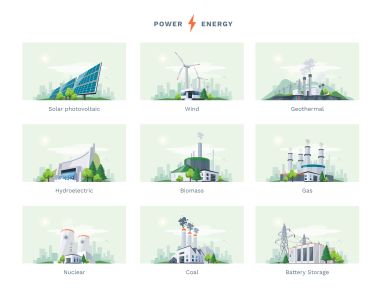
As we move further into the 21st century there are more options available to us for power generation. These include traditional sources such as fossil fuel energy generation through the main power grid or in diesel generators, and renewable energy sources such as wind and solar. By combining two or more of these sources, we have a hybrid power system.
The different combinations are a result of various considerations made during the design process, which include the availability and viability of renewable energy sources, the electricity demands that need to be met, location and financial factors.
Some examples of the types of hybrid power systems being used are:
Solar-Diesel Hybrid System
A combination of solar photovoltaic panels and a diesel generator, mixing the new with the traditional for a greater balance of generation and distribution. Solar relies on the sun to generate energy, which means it can only do so when the sun is shining. As it is generated, it is used per demand, and the diesel generator is on standby as a backup source for energy delivery when the sun has not been able to produce sufficient supply thus ensuring a continuous supply of electricity.
Wind-Diesel Hybrid System
A combination of wind turbine/s and a diesel generator, which enables reduced reliance on fossil fuel by adding a renewable energy source. Wind turbines are a sustainable method for producing energy, but they are an uncontrollable source because they are completely reliant on the presence of wind. A diesel generator acts as a backup to provide energy when weather conditions are unfavourable for wind generation.
Solar-Wind-Diesel Hybrid System
A combination of solar photovoltaic panels, wind turbines and diesel generators, this hybrid maximises sustainable energy resources and reduces reliance on fossil fuels. As long as the sun is shining, solar photovoltaic panels will generate energy, and as long as the wind is blowing the turbines will generate energy, thus providing as much as possible using renewable sources. The use of a BESS will maximise efficiencies by storing excess energy, and a backup diesel generator will provide a continuous supply of electricity during times when renewables are unable to meet demand.
Hybrid Grid System
A combination of renewables, with either solar or wind, or both, integrated with the main grid system. Energy generated by renewable sources is used onsite, with any excess energy being sent to the main grid. During times when renewables are not providing sufficient supply to meet demand, electricity is drawn from the main grid.
Hybrid Microgrid System
A combination of wind, solar, biomass, energy storage, diesel generators and sometimes the main grid, is called a microgrid. This is a stand-alone system than can be used independently or integrated with the main power grid. The centre of the microgrid system is the battery energy storage system (BESS), which stores excess energy generated by renewable energy sources such as wind and solar, for power delivery at a later time. The different energy sources are managed by powerful computer management systems to ensure maximisation of energy generation, storage and delivery.
These are some of the more common examples of hybrid power systems. With continuing advances in technology, more options are opening up to increase our capacity to create reliable power solutions.
Despite the negative environmental aspects associated with hybrid power solutions, their evident advantages position them as a compelling energy choice for the future. DEUTZ Australia firmly holds the belief that as technology and recycling systems progress, the benefits will ultimately surpass these drawbacks.
In remote industrial locations, establishing a connection to a central grid can be a costly and time-intensive task, prompting many operators to rely on burning diesel or natural gas for power. Conventional generators also exhibit diminished efficiency at lower loads, consuming five times more fuel to provide a single kilowatt-hour of energy. Nevertheless, the incorporation of renewable energy sources alleviates these concerns, resulting in decreased emissions of harmful substances such as carbon dioxide and nitrogen oxide into the environment.
While the production of infrastructure and equipment presents environmental challenges, we are confident that our hybrid power solutions and their constituents meet stringent quality standards, thereby extending their operational lifespans and minimising waste.
DEUTZ’s manufacturing sites have embraced sustainable approaches to reduce emissions and waste disposal, and we prioritise the reduction of superfluous packaging and the utilization of recycled materials whenever feasible.

